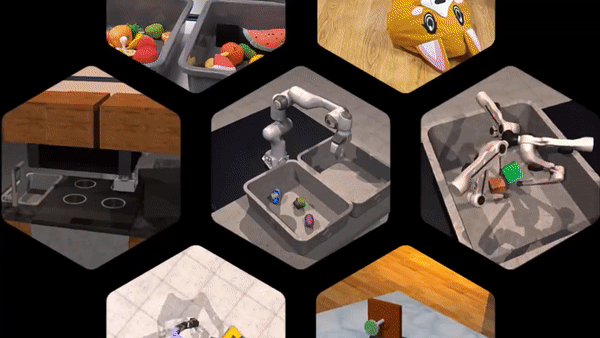This AI Research Presents RoboHive: A Comprehensive Software Platform and Ecosystem for Research in the Field of Robot Learning and Embodied Artificial Intelligence
In recent years, artificial intelligence (AI) advancements have been made, notably in language modeling, protein folding, and gameplay. The development of robot learning has been modest. Moravec’s paradox, which holds that sensorimotor behaviors are inherently harder for AI agents than high-level cognitive activities, might be partly blamed for this slower progress. In addition, they must focus on a critical issue that is as important: the complexity of software frameworks for robot learning and the absence of common benchmarks. As a result, the entrance hurdle is raised, quick prototyping is restricted, and the flow of ideas is constrained. The discipline of robotics continues to be more fragmented than others, such as computer vision or natural language processing, where benchmarks and datasets are standardized.
Researchers from U.Washington, UC Berkeley, CMU, UT Austin, Open AI, Google AI, and Meta-AI provide RoboHive, an integrated environment designed specifically for robot learning, to close this gap. RoboHive is a platform that serves as both a benchmarking and research tool. To enable a variety of learning paradigms, including reinforcement, imitation, and transfer learning, it offers a wide range of contexts, specific task descriptions, and strict assessment criteria. For researchers, this makes efficient investigation and prototyping possible. In addition, RoboHive provides customers with hardware integration and teleoperation capabilities, allowing for a smooth transition between real-world and virtual robots. They want to close the gap between robot learning’s present status and its potential for development using RoboHive. The creation and open-sourcing of the RoboHive, a unified framework for robot learning, is the main contribution of their work.
RoboHive’s salient characteristics include:
1. The Environment Zoo: RoboHive offers various settings spanning various academic fields. These settings may be used for manipulation tasks, including dexterity in-hand manipulation, movement with bipedal and quadrupedal robots, and even manipulation using musculoskeletal arm-hand models. They use MuJoCo to power their virtual worlds, which offer quick physics simulation and are made with a focus on physical realism.
2. RoboHive presents a unifying RobotClass abstraction that smoothly interacts with virtual and actual robots via simhooks and hardware hooks. By changing a single flag, this special capability enables researchers to easily interact with robotic hardware and translate their discoveries from simulation to reality.
3. Teleoperation Support and Expert Dataset: RoboHive has out-of-the-box teleoperation capabilities via various modalities, including a keyboard, 3D space mouse, and virtual reality controllers. They are sharing RoboSet, one of the largest real-world manipulation datasets amassed by human teleoperation, which covers 12 abilities across several culinary chores. Researchers working in imitation learning, offline learning, and related disciplines will find these teleoperation capabilities and datasets especially helpful.
4. Visual Diversity and Physics Fidelity: RoboHive emphasizes projects with great physical realism and extensive visual diversity, surpassing prior benchmarks, to reveal the next research frontier in real-world robots. They link visuomotor control studies with the visual difficulties of everyday life by including complex assets, rich textures, and enhanced scene arrangement. Additionally, RoboHive natively enables scene layout and visual domain randomization in various situations, boosting visual perception’s adaptability and delivering realistic and rich physical material.
5. Metrics and Baselines RoboHive uses short and unambiguous metrics to assess algorithm performance in various situations. The framework offers a user-friendly gym-like API for seamless integration with learning algorithms, allowing accessibility for multiple academics and practitioners. Additionally, RoboHive contains thorough baseline results for frequently researched algorithms within the research community in partnership with TorchRL and mjRL, providing a benchmark for performance comparison and study.
Check out the Paper and Project. All Credit For This Research Goes To the Researchers on This Project. Also, don’t forget to join our 31k+ ML SubReddit, 40k+ Facebook Community, Discord Channel, and Email Newsletter, where we share the latest AI research news, cool AI projects, and more.
If you like our work, you will love our newsletter..
We are also on WhatsApp. Join our AI Channel on Whatsapp..
![]()
Aneesh Tickoo is a consulting intern at MarktechPost. He is currently pursuing his undergraduate degree in Data Science and Artificial Intelligence from the Indian Institute of Technology(IIT), Bhilai. He spends most of his time working on projects aimed at harnessing the power of machine learning. His research interest is image processing and is passionate about building solutions around it. He loves to connect with people and collaborate on interesting projects.
Credit: Source link


Comments are closed.